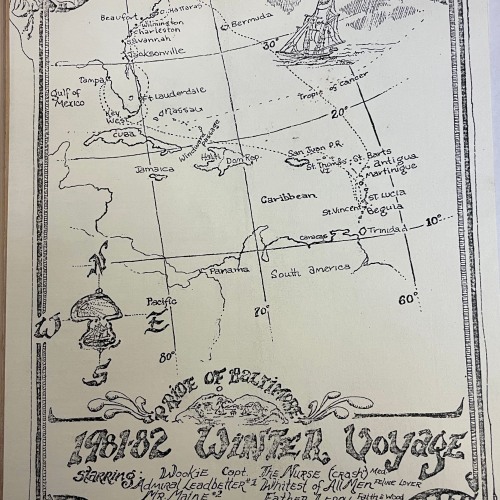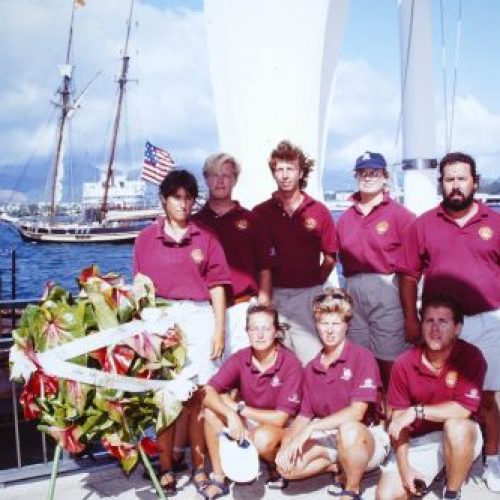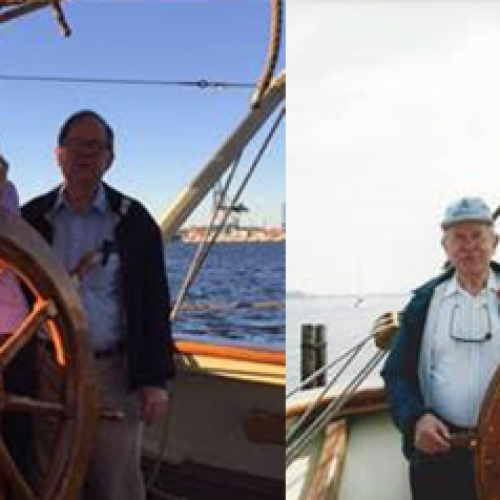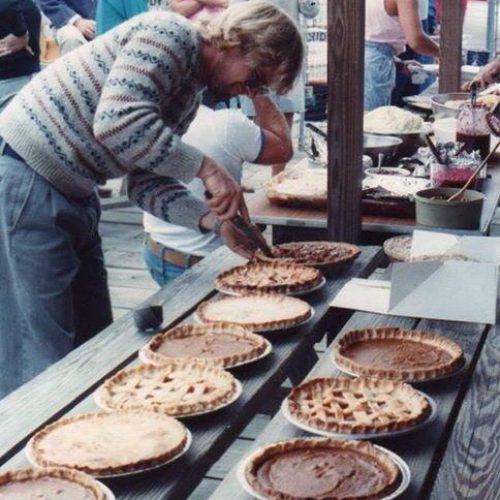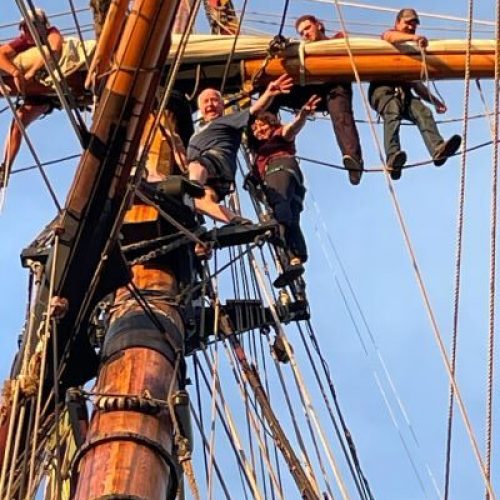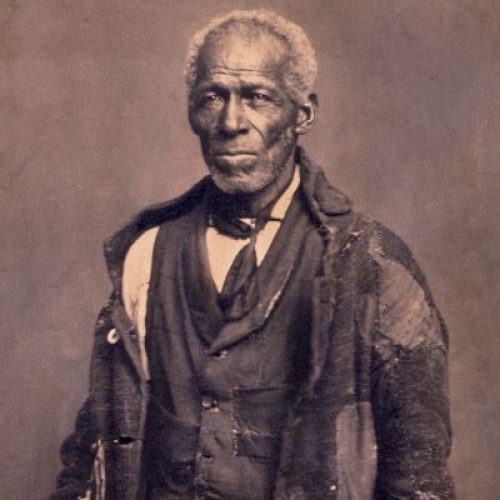September 15, 2014
Pride of Baltimore II, alongside at Constellation Pier, Inner Harbor
Wx: East Force 1, 2/8 Celebratory Cumulus, the rest of the sky a Bicentennial Blue
Today’s dawn ushers in a whole new century of our storied national anthem, and a well-worn Pride II crew has seen to it that the ship and the city have marked the anniversary with style and passion. Some ships have already left, the guns and jets are silent now, crowds of visitors still swarm the harbor. But yesterday’s crescendo has washed over and while we bask in the success and import of “Spectacular,” the typical snap and bustle aboard is slightly leaden with fatigue. And no surprise– during the 25 hours actual hours of the Battle of Baltimore anniversary, crew and ship were in full action themselves. With a rotation of watches and captains, plus lots of work from shore side office staff, we scarcely stopped moving, and never stopped commemorating the incredible events of 200 years ago.
As the guns of Fort McHenry thundered out Saturday morning,we sailed alongside a British-flagged Lynx and waved a truce flag over our Francis Scott Key impersonator as he plead his case across the rail for Royal Marines to unhand Doctor Beanes. When the historically timed “re-enactment rain” came down (nearly to the minute, according to the 1814 accounts), we rigged awnings, waited for the sky to clear, then sailed in sleek silence under the roaring military muscle of the Blue Angels. As the town turned electric for the prelude to the fireworks, Pride paraded through the harbor to blast off a national broadcast with three guns. When the “bombs” of the pyrotechnics bust over Fort McHenry and Baltimore Harbor, 100 viewers joined us on deck. Then, once the dust settled, irrepressibly enthusiastic Ranger Vince Vaise from the Fort narrated a midnight retracing of the final desperate British assault on the batteries up the Ferry Branch of the Patapsco.
From three to six am things fell silent, just as they did in 1814. But the crisp morning ushered in a new flurry of action. The culminating moment of the weekend would feature Baltimore’s 1812 historic triumvirate – the Maryland Historical Society’s hand-sewn replica of the Star-Spangled Banner would be hoisted over the Fort while Pride II stood in the offing as Key’s truce ship President and a collected squadron of Tall Ships around her represented the invading British.

With Pride II booked full of enthusiastic passengers and logistics of the ship movements rattling in my mind, Captain Miles and I decided it would work smoothest if he sailed the ship and I marshaled the squadron from a vantage ashore. To foster that plan along, Ranger Vaise welcomed me, along with my wife and parents, to survey the scene from the commanding perch of the Fort’s Bastion 5. Equipped with a handheld VHF and copies of the pages of notes and schematics I’d issued to the ships, we set off for the Fort’s dock in Pride II’s rescue boat. The physical bustle and tangible excitement at the Fort stewed with amazement – this was it, the very morning, the day when the focus of so much 1812 education, programming, efforts, and toiling over months and years was about to float in the September breeze for Baltimore and the world to see.

Ships trickled out from downtown. The inbound cruise ship Carnival Pride cleared the channel into South Locust Point and left the harbor to historic craft. US Armed Forces, and Sailors and Marines from our 1812 adversaries come allies Canada and England, took up position around dignitaries from local, state, and national government in the Parade Ground within the walls. Sun glinted off the black barrels of replica and modern armaments as they stood silently ready for a barrage of salutes. The cool northeast breeze streamed the Fort’s Storm Flag in anticipation.
The pieces started moving. Ranger Vaise, radiating excitement even through a veil of exhaustion, orchestrated the unfurling and preparation of the replica Garrison Flag. The ships slid over glittering water into position under a mantle of low cumulus. As the events of the battle were narrated, a crowd began to gather on the bastion around me, watching the ships. At first I was irritated – with eleven ships and two pulling boats to coordinate, I’d envisioned relative solitude to lay out my notes and coordinate via radio. Having a crowd to eavesdrop and chime in on the necessary communications might offer more than a slight nuisance.
But as the ceremony in the Fort and formation beyond the ramparts continued shaping up, I noticed there were nearly as many people on the bastion with me as in the parade ground. They whispered questions: What’s that ship? Where are they from? What are they all doing? And I had time, as the squadron deftly arrayed themselves across the river, to answer all the questions. Between radio calls to shift and tighten up the line, I could tell the people, these mesmerized appreciators of history, what they were seeing and how much it looked like what Major George Armistead saw 200 years ago that very minute. I wasn’t alone, and was happy for it. I was surrounded by people who, like me, felt deeply moved by this instance, the commemoration of America’s emergence from a divisive and trying, nearly adolescent, conflict into maturity.

The Army Old Guard fired a salvo. When the smoke cleared and the guns fell silent, the ramparts were teeming with people. A last salute from a replica 24lb gun, and the fifing of “Yankee Doodle” lifted the hand-sewn replica aloft. Lynx and Sultana swapped their British ensigns for American. Salutes and cheers echoed from the ships. Through the smoke,their rigs etched a striking visage of history.
By 0940, Pride II was on station off the water battery and the ships processed in, saluting both her and the Fort. Pride II’s Key impersonator was standing at the rail, cheering in the new era of the Star-Spangled Banner. Up on the ramparts, the crowd around me pressed in,asking more eager questions whenever I wasn’t hailing the passing ships on radio to thank them for their part in this historic event. It got so crowed that we were forced off the bricks and (to the chagrin of the Rangers) onto the grass that sprouted from the earthworks. Like most forts of her era, Fort McHenry is mostly earthwork – largely composed of dirt, held together by brick sheathing. Throughout the 214 years of the Fort’s existence, the bricks have been renewed, but the earth inside is still the same.
And then I realized the truth of the week – that we at Pride, the Fort, and Maryland Historical Society had helped, but history had repeated itself organically. Two-hundred years ago, this week was won by the citizens of Baltimore unexpectedly repulsing the British attack. And as Fort, Flag, and Fighting Sail recreated the events of 1814 on a brilliantly sunny morning, it was we citizens of today’s Baltimore that stood on the very earthworks our counterparts defended two centuries ago. Our feet connected us to the timeline of history, the living earth of the Fort, the very foundation of our “Land of the free,” our “Home of the Brave.”
Captain Jamie Trost


